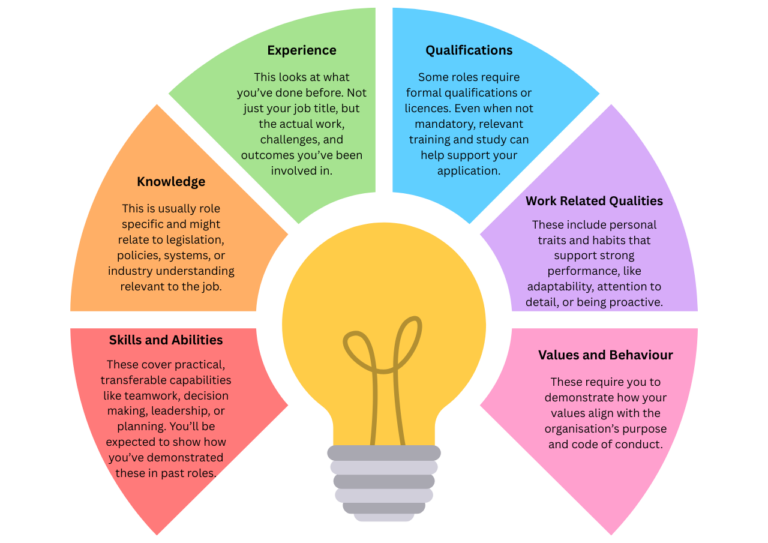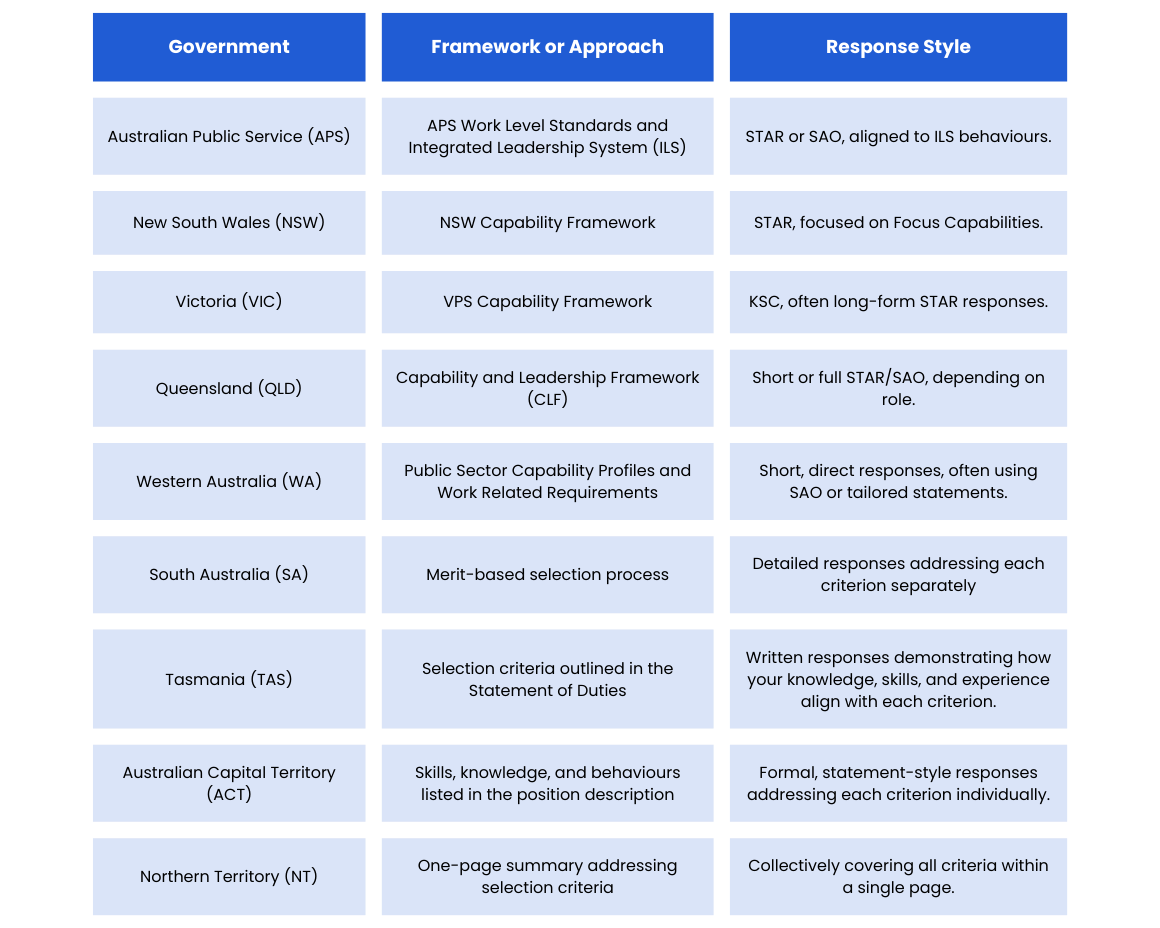Expert Selection Criteria Writers....
Turning your career stories into application gold!
Selection Criteria Writing Services
That Get Results!
APS, State and Local Government Application Experts.
Written by Qualified Award Winning HR Professionals
Your Experience..... Their Language!
Writing about yourself can be hard. Writing about yourself while navigating government frameworks, behavioural markers, and word counts? That’s a whole different level.
If you’ve been staring at a selection criteria document wondering where to begin, you’re not alone. Government job applications across Australia are complex, highly competitive, and often overwhelming. That’s where we come in.
At Resume Rescue, we don’t just write selection criteria responses, we help you unpack your experience, draw out your best examples, and translate them into confident, tailored, criteria-based statements that speak directly to what hiring managers and recruitment panels are looking for.
Whether it’s APS, state government, or a local council role, we understand the expectations behind every criterion and how to structure a response that feels authentic, strategic, and polished.

From Stuck to Stand Out....
Let's Tackle Your Selection Criteria Writing Together!
See why professionals nationwide turn to us for help with government applications.
Selection Criteria Responses
Statement of Claims
Pitch
Short Response
Why Evidence Matters
When it comes to selection criteria writing, general statements aren’t enough!
You might be tempted to say things like “I’m a strong communicator” or “I work well in a team”. But unless you substantiate your claims with real examples, those statements won’t hold much weight.
Government recruitment is evidence-based. Hiring managers and selection panels are looking for clear proof that you’ve demonstrated the skills, behaviours, or values they’ve asked for. Not just once, but in a way that shows capability, judgement, and impact.
That’s why each response needs to be structured, specific, and focused on outcomes. It’s not about writing beautifully, it’s about writing credibly.
We help you identify the right examples and present them in a way that shows exactly how you meet the criteria.
It’s not about saying you’re great. It’s about showing them why!
Types of Selection Criteria
Not all selection criteria are created equal. Depending on the role, level, and agency, the expectations (and terminology) can vary. But they require you to demonstrate that you’re capable, experienced, and suitable to step into the role.
Below is a quick breakdown of the main types of criteria you might come across in government applications.
Capability-Based Criteria
Used across most federal and state government roles, these focus on skills, behaviours, and knowledge needed for the job. You’ll often need to align with a capability framework and provide structured, evidence-based responses.
Values-Based Criteria
These assess how well your personal values match the organisation’s mission. The focus is often on empathy, ethics, collaboration, and respect, with examples that reflect those values in action.
Key Selection Criteria (KSC)
KSC refers to a list of core capabilities or work related requirements for the role. Responses are expected to be detailed, specific, and structured, usually using the STAR method or similar formats.
Essential & Desirable Criteria
You might see roles that split criteria into ‘must-haves’ (essential) and ‘nice-to-haves’ (desirable). You should always address the essential criteria thoroughly, and if space allows, address the desirable ones to strengthen your application.

Selection Criteria Requirements by State and Territory
Government applications vary across Australia, so it’s important to understand what’s expected in each state and territory.
While most follow a consistent framework at the state or territory level, individual departments or agencies may set their own requirements. The summary below outlines the most common approaches used across government recruitment. Our selection criteria writers are experts across all of the below.

How to Structure Your Responses: STAR, SAO, and CAR.
If you’ve ever googled “how to write selection criteria” or “selection criteria writers” you’ve probably come across acronyms like STAR, SAO, and CAR. These aren’t just buzzwords, they’re the frameworks most government departments expect you to follow when you’re explaining how you meet the criteria.
Selection panels want more than a list of duties. They’re looking for real examples that show how you’ve handled situations, solved problems, and contributed to outcomes. These methods help you tell those stories in a structured way that is easy to follow.
STAR
Situation, Task, Action, Result
The most widely used structure across government applications.
Situation – Set the scene. Where were you and what was happening?
Task – What was your responsibility?
Action – What did you do?
Result – What was the outcome?
This method helps you explain not just what you did, but how and why it mattered.
SAO
Situation, Action, Outcome
Often used in Western Australia and Queensland applications, this format is slightly more concise than STAR but still focused on outcomes.
Situation – The context or background.
Action – The steps you took.
Outcome – What happened as a result.
SAO is great for short-form criteria or where space is limited.
CAR
Context, Action, Result
CAR is another common method, often used in interviews and written responses.
Context – The situation or challenge.
Action – What you did to address it.
Result – What was achieved.
It’s a simple, straightforward way to show evidence of your skills in action.
How it works
No two government roles (or clients) are the same, which is why our selection criteria writing service process is considered, flexible, and designed to create high-quality, role-specific documents that stand up to scrutiny.
(via email or consult)
high-impact examples.
Every word is purposeful and aligned
to the criteria.
to submit.
Looking for an idea on pricing?
The most common selection criteria writing services include one page of criteria for $299, two pages for $399, and 500-word pitch or statement at $299.
Pricing can vary depending on the role and requirements, so please request a quote to confirm the cost for your specific application.
Click below links to explore current public service opportunities across Australia:
Take the first step towards your dream job by contacting us about our selection criteria writing today!
